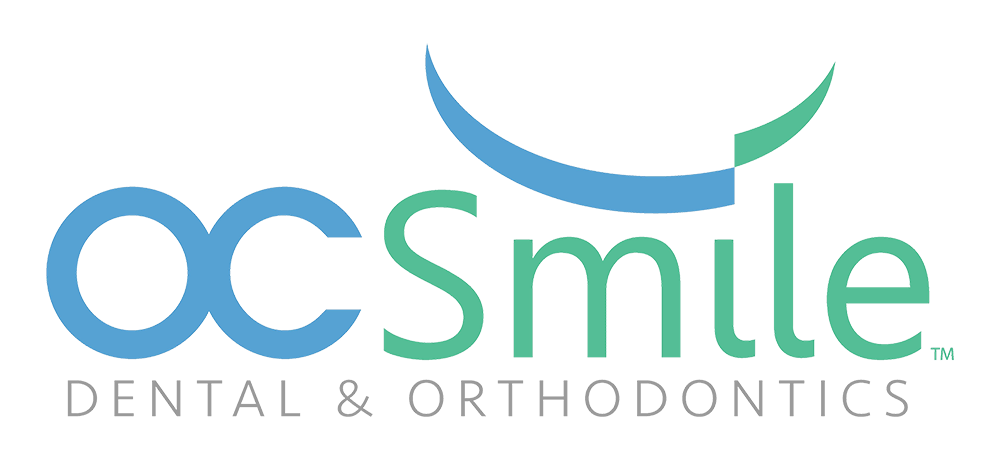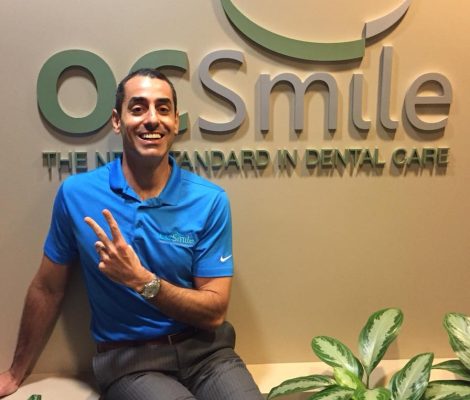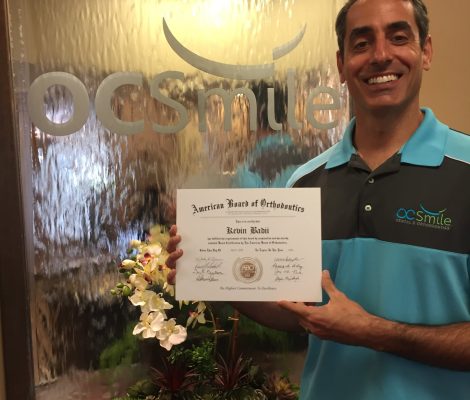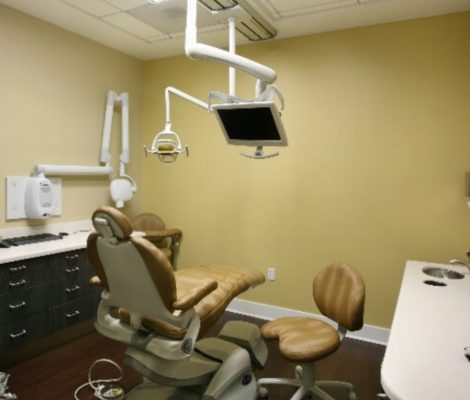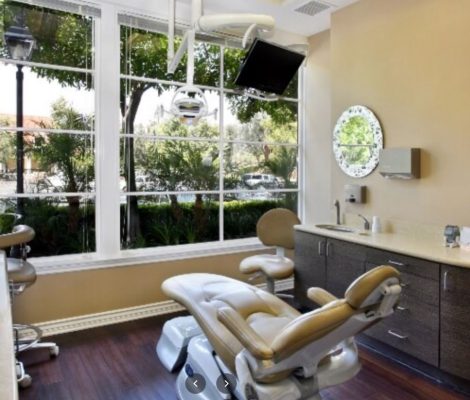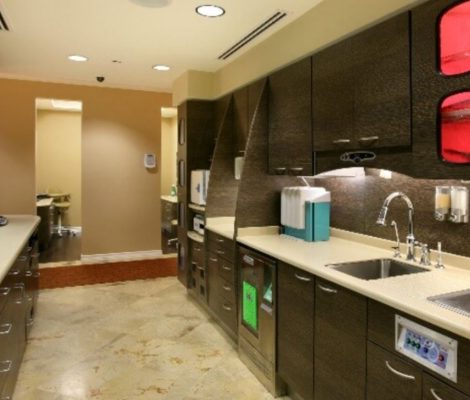Orthodontists in Southern California
Cosmetic Orthodontic Dentistry in Fullerton & Mission Viejo, CA
Orthodontics is the area of dentistry that deals with repositioning misaligned jaws and teeth. Teeth that are misaligned or that do not fit together properly are more difficult to keep clean, are more likely to experience early tooth loss from decay and periodontal disease, and put additional strain on the chewing muscles, which can result in headaches, TMJ syndrome, neck, shoulder, and back pain. Crooked or misaligned teeth can also make someone look less attractive.
A healthier mouth, a more attractive appearance, and teeth that are more likely to survive a lifetime are all advantages of orthodontic treatment.
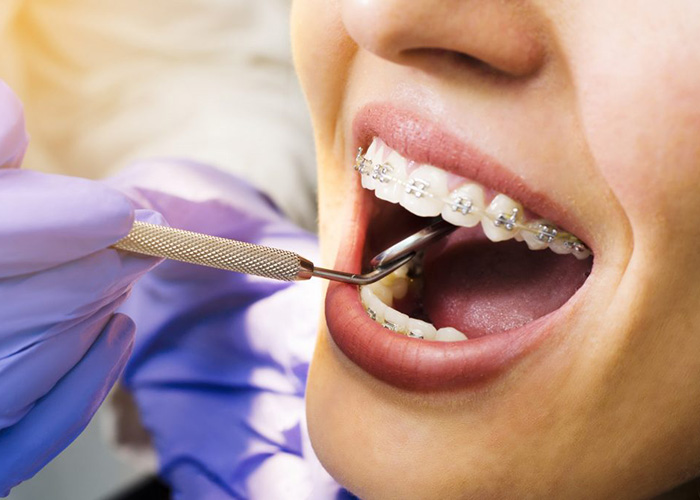
How do I know if I need Orthodontics?
Our Board Certified Orthodontist can determine whether orthodontics is advised and create a personalized treatment plan that’s ideal for you based on diagnostic tools like a thorough medical and dental health history, a clinical assessment, plaster models of your teeth, and unique X-rays and photographs.
If you have any of the following, you may be a candidate for orthodontic treatment:
- Overbite, sometimes called “buck teeth” — where the upper front teeth lie too far forward (stick out) over the lower teeth
- Underbite — a “bulldog” appearance where the lower teeth are too far forward or the upper teeth too far back
- Crossbite — when the upper teeth do not come down slightly in front of the lower teeth when biting together normally
- Open Bite — space between the biting surfaces of the front and/or side teeth when the back teeth bite together
- Misplaced Midline — when the center of your upper front teeth does not line up with the center of your lower front teeth
- Spacing — gaps, or spaces, between the teeth as a result of missing teeth or teeth that do not “fill up” the mouth
- Crowding — when there are too many teeth for the dental ridge to accommodate
How does Orthodontic treatment work?
To help move teeth, retrain muscles, and influence the development of the jaws, a variety of fixed and removable equipment are employed. These devices function by applying light pressure to the jaw and teeth. Which orthodontic strategy is most likely to be successful will depend on how serious your issue is.
Common Problems
In an underbite, the lower jaw is longer than the upper which causes the lower teeth to protrude in front of the upper teeth. It is best to diagnose the problem early.
Technology
Orthodontic technology keeps advancing, and Smile Wide is a progressive practice that continually keeps pace with new developments. The new technologies we adopt allow us to achieve:
- More accurate diagnoses
- More precise treatment plans
- Less conspicuous braces and teeth-straightening systems
- Quicker treatment times
- Less pain and discomfort during orthodontic treatment and dental work
- Fewer check-ups
- More efficient scheduling and customer service
Types of Braces
These work in the same way as traditional braces, but the brackets are made from a clear, transparent sapphire crystal. The braces are less visible to others, which makes them a popular choice for adults who need orthodontic treatment.
Fullerton, CA & Mission Viejo Orthodontists – Top-Rated Orthodontics Services Serving Mission Viejo, Fullerton & The Surrounding Areas
What do orthodontists do?
Orthodontists are dental professionals that identify and treat abnormalities with tooth position, alignment, and spacing, as well as other facial and jaw anomalies. To remedy these issues, a variety of treatments are performed, including braces and other dental appliances.
Why should I (or my loved ones) get orthodontic treatment?
There are two compelling reasons for this: beauty and utility. Having a beautiful grin not only impacts how others perceive you, but it also improves your own self-esteem. Orthodontic therapy also improves the function of your teeth and makes it easier to clean them, which can benefit your overall health.
When should orthodontic treatment be started?
You’re never too old to start orthodontic treatment, but if you begin sooner rather than later, your issues may be easier to address. According to the American Association of Orthodontists, a kid who may require orthodontic treatment should have their first appointment around the age of seven.
How can I recognize a potential bite problem?
Teeth that are projecting, packed together, or erupting out of position are all signs that you should seek treatment. Mouth breathing, frequent chewing of the face or palate, speech difficulties, and thumb sucking that lasts longer than 3-4 years are less evident indicators. If teeth don’t fit together properly as the mouth closes, or if the jaws make noises or shift as they move, this could be an indication of an orthodontic problem.
Does getting braces hurt? What about wearing them?
Braces are usually painless to put on. Minor aches and pains are common in the first few days or so as people acclimatize to wearing their equipment; occasional adjustments can also cause soreness, though this usually only lasts a few days. Over-the-counter pain medicines can be helpful in some cases, but they are usually unnecessary.
How long will treatment take?
It varies from person to person, but the active portion of therapy (wearing braces or other equipment) might take anywhere from 6 to 30 months. Following that, a retainer is worn for at least another few months.
How often will I come in for an appointment?
It depends on what you’re doing and how frequently you need to be watched. You’ll normally visit the office once every 4 to 10 weeks during active treatment.
Will I need to have any teeth extracted?
Extraction may be essential if your teeth are highly crowded (because your mouth is too small to fit all of them) or if you have impacted teeth (teeth that are trapped beneath the gum line by other teeth). Early treatment in the case of younger patients may eliminate the need for extraction.
Will I have to watch what I eat?
Yes, you should avoid things that could cause damage to your braces or cause them to become trapped. Raw veggies, hard candies, caramel, taffy, and ice cubes are just a few examples (fortunately, ice cream is OK). You’ll be given a list of foods to stay away from.
Will I be able to play sports/ play my instrument?
In a nutshell, yes. Of course, whether or not you have braces, we recommend that you use a mouthguard while participating in most sports. Musicians can usually continue to play their instruments as they did before, but braces may require a little adjustment period.
Do I still need to see my regular dentist while I’m getting orthodontic treatment?
You do, and it’s more vital now than it’s ever been! When you’re wearing braces, keeping your teeth clear of plaque (and potentially decay) can be difficult. With regular cleanings and exams, your dentist can help you avoid these issues.
Will I wear a retainer when my braces come off?
The answer is almost always yes: if you don’t wear a retainer, your teeth can quickly shift out of position, wiping out all of your hard work! Your retainer ensures that you have a beautiful smile for the rest of your life.
Is orthodontic care very expensive?
Orthodontic treatment is an investment in your long-term health and well-being. However, its price hasn’t increased as quickly as many other consumer items, and there are a variety of financing solutions available to make orthodontic treatment more reasonable. However, when compared to the genuine expense of living with crooked teeth, orthodontic treatment might be a good investment.
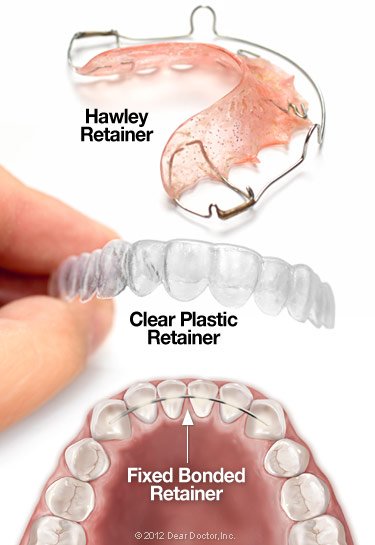
Your braces will be removed in the not-too-distant future. You’ll be rid of bands and brackets in a matter of minutes, ready to eat whatever you want and run your tongue over smooth, clean teeth. But, even on this joyous occasion, keep in mind that your orthodontic treatment is far from over: the following step, known as retention, is just getting started.
Retention is a crucial follow-up stage that usually entails wearing a retainer, which is an orthodontic equipment. Retainers come in a variety of styles, all of which are created to order.
But why do you need a retainer if your teeth are already straight? Simply said, if you don’t wear one, your teeth will begin to move back to their original position!
Teeth are maintained in place by a network of fibers termed periodontal ligaments, rather than being fixed rigidly in the jawbone. It takes several months for the periodontal ligament to adjust to its new position after it has been relocated. So, if you want to keep your new smile and avoid wasting all of the time, work, and money you put into it, make sure you wear your retainer as instructed.
A retainer is normally put on the same day as your braces are removed. Another series of X-rays and/or bite impressions may be taken after your teeth have been thoroughly cleaned to see how well your braces worked and how much your wisdom teeth have developed. After that, you will be given a retainer.
Three Types of Retainers
There are three basic types of retainers available today; each works best in particular situations. The “Hawley” retainer is the most common, consisting of a thin, tongue-shaped piece of acrylic molded to fit your mouth and a wire that holds your teeth in place. The Hawley retainer is simple, long-lasting, and straightforward to remove. You may even customize it by selecting different colors and designs for the plastic arch.
Finally, fixed retainers, particularly on the lower front teeth, may be a possibility for certain people. They aren’t removable by the wearer, but they aren’t visible either, as their name implies. This technique, like lingual braces, uses a wire that is connected to the tongue side of the teeth. It could be there for months or even years. This type of retainer is sometimes recommended when there’s a high risk that teeth could revert to their former position.
A Period of Adjustment
After a short time, most people adjust quite well to wearing a retainer. For the first day or so after wearing any type of retainer, some people may notice that they generate more saliva than usual, which is a normal reaction to a foreign object in the mouth. You may also find it difficult to speak normally at first, but this will pass quickly. Of course, unlike braces, detachable retainers should be removed whenever you eat or brush your teeth.
You’ll most likely be told to wear your removable retainer all day, every day at first. This period of continuous retainer use might continue anywhere from a few months to a year. It might be fine to wear it solely at night later on. Finally, you’ll probably only need to watch it a couple times per week.
Maintaining — and Retaining — Your Retainer
To stay fresh and germ-free, all retainers need proper cleaning. A Hawley-type retainer can be brushed gently with a regular toothbrush —a brush, on the other hand, may scratch the clear aligner kinds. Most detachable retainers may be cleaned with denture cleaners in powder or tablet form, as well as special retainer cleaners. Brushing and flossing are used to clean fixed retainers; if necessary, a floss threader or interproximal brush can be used.
Finally, remember to keep a retainer case with you at all times. You’d be astonished at how many retainers end up crumpled in a napkin and thrown away! Also, avoid overheating your retainer by washing it in extremely hot water or keeping it on a heater: this can cause it to warp and become unusable. With proper care and conscientious use, a retainer can help you transition from braces to a permanent, healthy smile.
 When you’re wearing braces, you know how vital it is to brush and floss properly, but what’s the best way to do it? Let’s begin with the fundamental brushing tools: A soft-bristle brush or a bi-level brush (one with shorter bristles in the center and longer bristles at the edges) can both be useful. When used properly, an electric toothbrush can be just as effective. However, make sure the electric brush is set to a low power level and that the brush’s vibrations don’t cause the brush’s back to contact the bracing!
When you’re wearing braces, you know how vital it is to brush and floss properly, but what’s the best way to do it? Let’s begin with the fundamental brushing tools: A soft-bristle brush or a bi-level brush (one with shorter bristles in the center and longer bristles at the edges) can both be useful. When used properly, an electric toothbrush can be just as effective. However, make sure the electric brush is set to a low power level and that the brush’s vibrations don’t cause the brush’s back to contact the bracing!
Brush your teeth at least twice a day (ideally after meals) with fluoride toothpaste for at least two minutes each time. Remember to brush all of your teeth, including the outer, interior, and chewing surfaces. Cleaning between the wires and the teeth, as well as between the brackets and the gums, is very important because this is where food particles can easily become caught.
Here’s a brushing technique to try: Place the tips of the bristles flat against your teeth, starting on the outside surfaces, and gently polish them clean with small circular strokes. Maintain circular strokes while tilting the brush toward the gum line (down for bottom teeth, up for top teeth) for areas between braces and gums. Then, using a strong back-and-forth motion, move on to the chewing surfaces of upper and lower teeth. Finally, brush the inside surfaces of your teeth with the same care as you did the exterior surfaces.
Special Brushing Tools
There are several particular tools that may help you clean the areas near brackets and cables if you’re having difficulties cleaning them. One is the proxabrush, or interdental toothbrush. Like a pipe cleaner, it has a little tuft of bristles that stick up all around it. Clean the tiny places beneath wires, around bands and brackets using it softly and carefully.
The oral irrigator, sometimes known as a “water pick,” is another unique cleaning instrument. This device uses a small stream of pressured water to spray at your teeth, which can assist dislodge food stuck in nooks and crannies. An oral irrigator isn’t a replacement for a toothbrush or dental floss, but it can be quite effective when used in conjunction with correct brushing and flossing practices.
Floss Fundamentals
Flossing at least once a day is required to keep your teeth and gums clean and healthy. But how can you get floss beneath your braces’ archwire? With the help of a floss threader, it’s not too difficult. It’s similar to threading a needle when using this device: Pull one end of the floss through the threader, then push the threader under the archwire with the free end of the floss. Now, on each end of the floss, slide it up and down the sides of both teeth, as well as all the way under the gums, until you hear a squeaky sound. Finally, remove it and replace it with a fresh strand of floss for the next spot.
Full Disclosure
Have you ever wondered how successful your tooth-cleaning methods are? Using specific vegetable dyes known as “disclosing solutions” or “disclosing tablets,” there is a precise technique to tell. These colours emphasize plaque and food particles that brushing misses as they disintegrate in the mouth. The coloured spots may then be easily removed, and you’ll know for sure if your dental hygiene procedures need to be adjusted.
Taking care of your teeth and gums today will pay off in the future. It allows you to get the most out of your orthodontic treatment and gets you started on the path to a brighter smile that will last a lifetime.
 Adult orthodontic patients are becoming increasingly common these days, and it’s easy to see why. Adults now have more subtle orthodontic treatment options thanks to the development of barely perceptible appliances. Many individuals are also aware that a smile makeover can have substantial social and professional benefits. Teeth straightening can be a crucial element of that self-esteem-boosting makeover.
Adult orthodontic patients are becoming increasingly common these days, and it’s easy to see why. Adults now have more subtle orthodontic treatment options thanks to the development of barely perceptible appliances. Many individuals are also aware that a smile makeover can have substantial social and professional benefits. Teeth straightening can be a crucial element of that self-esteem-boosting makeover.
There is no such thing as being too old for braces because healthy teeth can be shifted at any age. Adult orthodontic treatment, on the other hand, differs in two fundamental ways: For one thing, adult jaw growth and development is complete, thus orthodontic appliances cannot be used to change actual jaw anatomy in the same way that they can with a developing child.
Second, adults are more likely than youngsters to develop periodontal disease. Gentle forces will be provided to your teeth while you wear the orthodontic appliances, allowing them to shift through their surrounding bone. Periodontal health is important in all of this; if your gum tissues are unhealthy throughout orthodontic treatment, bone loss can occur, weakening your teeth’s long-term prognosis. As a result, any gum disease must be treated before orthodontic treatment may begin. In order to keep your periodontal health, you’ll need to get regular professional cleanings while undergoing orthodontic treatment and practicing proper oral hygiene at home.
Types of Orthodontic Appliances
All orthodontic appliances function in the same way: they use light, consistent force to shift teeth into the right position. However, because several improvements have been accessible in recent years, how we apply these pressures can differ. Some of the newest, less noticeable orthodontic appliances are meant to fit into an adult’s personal and professional life more comfortably. The following are examples of orthodontic appliances:
Traditional Metal Braces — When you image someone wearing braces, you generally picture little metal brackets connected to the front of the teeth. A small wire runs through the brackets and is fastened to metal bands that wrap around the back molar on either end.
Clear Braces — Clear ceramic, plastic, or a combination of both brackets can be used instead of extremely visible metal brackets. Except for the small wire running through them, they are nearly invisible, but they are more prone to fracture than metal braces.
Clear Aligners — Clear aligners are a removable alternative to the fixed orthodontic appliances mentioned earlier. They’re a set of translucent plastic “trays” that perfectly fit over your teeth. Each tray is part of a set of trays that gradually shift your teeth into the right position. Your trays are created using advanced computer software that creates a virtual representation of your bite.
Lingual Braces — No one can see your metal braces because they are linked to the back of your teeth (tongue side). That’s the bright side. On the downside, they might be more difficult to adjust to than standard braces and are more expensive.
After Treatment
No matter whatever type of appliance you choose or what age you are, wearing a retainer after orthodontic treatment is essential. Teeth that aren’t held in place by a retainer for long enough for new supporting bone to form around them can drift back to their original placements, which is something you don’t want to happen. You will be taught how to keep your new, more attractive smile for years to come so that it continues to make you look and feel terrific.

It’s an exciting moment for your first appointment! It’s an opportunity for you to learn more about the treatments and services that can help you achieve your ideal smile. The initial consultation is where it all begins.
You should budget at least an hour for your initial visit. That way, no one will feel rushed, and you will have plenty of time to ask any questions you may have. One of the receptionists or patient coordinators will greet you and gather basic information before escorting you through the office. Then comes some diagnostic work and an examination.
Making a Plan
A big part of the first visit is to determine what treatment is necessary to correct any problems found — and choose whether to start right away or wait till later. The process begins with a series of standard pictures of the teeth in their current state. The next step is to take a series of radiographic (X-ray) images. These images depict what’s happening behind the gums, including the position and growth of bones and joints, as well as the teeth that are still below the gum line.
An impression (mold) of the teeth may be taken in some situations to construct an identical reproduction of the bite. This assists in determining the nature of the problem and the most effective treatment options. Biting down on a soft putty-like material for a few moments creates the impression, which is subsequently removed.
Then it’s time for the examination. In addition to examining inside the mouth, you may be asked questions such as whether the jaws make a noise when opening or shutting, or if you have any chewing or swallowing issues. When all of this information is combined, a proper diagnosis may be made and a treatment plan can be finalized during the initial visit.
Discussing Your Treatment Options
Following the examination, you may be told that everything is alright, or therapy may be suggested. Depending on the stage of development of the teeth and jaws, it may start right away or later. You’ll probably be told to come back for regular checkups until it’s time to start.
The initial visit, whether you’re starting now or later, is the greatest time to ask questions about the procedure. Treatment options, what to expect at various stages of the process, and any of the following are all topics to discuss:
- Can orthodontic treatment benefit me (or my child)?
- What general procedures will be used to correct the problem?
- Are any options available (or recommended) for my treatment?
- Should I get treatment now, or is it better to wait?
- Will tooth extraction be necessary?
- How much does treatment cost? Are payment plans available?
- How long do you expect treatment should take?
You should have a better grasp of how to achieve the best possible smile when you leave the office.

Having orthodontic treatment may take some getting accustomed to at first. When appliances are first placed, it’s usual to feel a little pain or small aches as teeth begin to move into new locations. However, it’s reassuring to know that true orthodontic emergencies are uncommon.
If you believe you have an emergency, the first step is to assess the seriousness of the situation: is it an urgent scenario that requires immediate attention, or is it a small problem that you can handle yourself until you can get to the office?
A Major Emergency
There are only a few true orthodontic (or dental) emergencies. They include:
- Trauma or injury to the teeth, face or mouth
- Infection or swelling of the gums, mouth or face
- Severe, unmanageable discomfort or pain in these areas
In any of these scenarios, you should get aid as quickly as possible, and if necessary, go to an emergency room. In most cases, though, the first stop should be at the dentist’s office. If you have a fractured tooth, for example, you need to get it diagnosed and treated right away. Your orthodontic treatment plan can then be tweaked as needed. Severe discomfort or swelling, on the other hand, could indicate an infection or condition that requires immediate attention.
Some Minor Troubles
Fortunately, most orthodontic issues are minimal in comparison to these conditions, although they can still produce pain or irritation. In general, try to relieve the immediate source of the discomfort before calling for an appointment. Here are some of the more frequent orthodontic issues, as well as some ideas on how to alleviate them at home:
Loose or broken brackets, bands or wires
Eating hard or sticky candies or food, or playing with the braces, are common causes of this problem. Leave the band or bracket attached to the wire if it is still attached to the wire — but don’t connect any elastics to it! If it irritates the inside of your mouth, you can cover it with orthodontic wax. Save it if it has come off. In either situation, phone our office and tell us what happened, and we’ll advise you on what to do next.
Misplaced or poking archwire, bracket or tie
The archwire (the wire that joins the teeth) may begin poking near the rear of the mouth or hurting the cheeks when the teeth begin to shift. With a pencil eraser or a Q-Tip, try repositioning the wire into a better position. If the wire refuses to move, you may be able to cut the end off with a sterilized nail clipper – but please contact for help or instructions first. Tweezers can also be used to gently move a misplaced wire or a tangled tie that’s producing issues.
When wires or brackets irritate the skin, coating the metal pieces with wax can help relieve the pain. It’s recommended to make an appointment for any of these types of issues so that they can be addressed.
General tooth pain or loosening
During orthodontic treatment, it’s common for teeth to loosen somewhat – this indicates that they’re moving! Tenderness may accompany this movement, especially after braces have been put or modified. You can use your regular over-the-counter pain medicine for minor aches and pains. A salt-water rinse twice a day may also help: In an 8-ounce glass of warm water, dissolve one teaspoon of salt and rinse for 30 seconds. A warm washcloth or heating pad applied to the outside of the jaw can also help.
While true emergency situations are uncommon, the goal is to make orthodontic treatment as painless as possible.
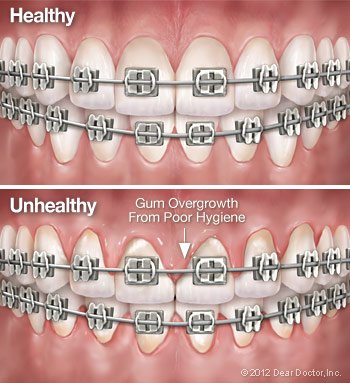 Maintaining proper dental hygiene is vital for everyone, but it’s even more important when you’re undergoing orthodontic treatment. Why? Because the appliances you may need to wear throughout treatment (such as braces or clear aligners) are incredibly successful at straightening misaligned teeth, they can also trap food particles easily. It’s a little more difficult to keep your teeth (and your appliances) clean, but you can do it! Here’s why maintaining proper dental hygiene is so vital throughout orthodontic treatment, as well as some pointers on how to do so.
Maintaining proper dental hygiene is vital for everyone, but it’s even more important when you’re undergoing orthodontic treatment. Why? Because the appliances you may need to wear throughout treatment (such as braces or clear aligners) are incredibly successful at straightening misaligned teeth, they can also trap food particles easily. It’s a little more difficult to keep your teeth (and your appliances) clean, but you can do it! Here’s why maintaining proper dental hygiene is so vital throughout orthodontic treatment, as well as some pointers on how to do so.
The major enemy of oral health is plaque. Food that becomes trapped near tooth surfaces can lead to the formation of plaque — a biofilm is a thin layer of microorganisms and organic detritus that contains germs that can be dangerous. Plaque removal is more difficult with braces or other appliances. Plaque bacteria break down carbohydrates in food and produce acids, which can damage teeth and irritate gums. Cavities, white patches on teeth, gum disease, and foul breath can all result from this.
One of the most efficient ways to maintain strong, healthy teeth and gums is to keep plaque under control. Diet, everyday upkeep, and frequent expert treatment are the three basic methods to go about it. They’re your teeth’s best defense when they’re all used together.
Diet and Decay
Avoiding items that increase your risk of tooth decay is an important part of maintaining healthy teeth and gums. That includes limiting or eliminating sugar-rich foods such as soda, candy, and ice cream. It also means avoiding things like toffee, gum, licorice, and caramels, which can become stuck in your braces.
Extremely hard or sticky foods might also cause orthodontic appliances to become physically damaged. Braces or retainers with damaged wires or loose brackets aren’t going to help you straighten your teeth at all! Hard candies or nuts, beef jerky, and hard pizza crust should all be avoided. Continue to eat nutritious foods such as carrots and apples, but cut them into bite-sized pieces first! Also, avoid chewing on ice, pencils, or your nails; these activities can harm your appliances and possibly lead to chipped teeth!
Daily Maintenance
You know how important brushing and flossing are for keeping a healthy smile — especially now that you’re in orthodontic treatment. But sometimes it’s harder to clean your teeth effectively around an appliance’s brackets and wires. Here are some tools and tips you can try for better tooth cleaning.
Even with braces, a soft-bristle or bi-level toothbrush (one with larger bristles on the edges and shorter ones in the middle) can help remove plaque. On a low level, an electric toothbrush can also be utilized. Use an interdental brush, also known as a proxabrush, to clean hard-to-reach places. This particular tooth-cleaning aid, which is fashioned like a pipe cleaner, has small bristles that can get in between wires, brackets, and teeth. It is able to reach into the smallest nooks and crannies and control plaque development with delicate and continuous effort.
Flossing at least once a day is recommended throughout orthodontic treatment. While flossing with braces is a little more difficult, there are some unique tools available, such as floss threaders and specific types of floss, that can assist you get the floss between the wires and gum line. When your braces are put on, the office staff will go through correct brushing and flossing practices with you, but if you have any questions, don’t hesitate to ask!
To improve your cavity resistance, an in-office or at-home supplemental fluoride therapy may be prescribed, depending on your situation. To relieve minor gum inflammation or irritation, an antiseptic rinse may be indicated.
If you wear a retainer, brush it on a daily basis in the same way that you brush your teeth. A cleaning solution may be suggested, but never use hot water to clean your retainer because it can deform the soft plastic and render it useless! When it’s not in your mouth, always keep it in a case.
Professional Care
It’s just as vital as ever to keep your teeth healthy during orthodontic treatment with thorough inspections, cleanings, and preventive care. Your orthodontic treatment is a collaborative endeavor in which everyone plays a significant part. And the crew just has one goal in mind: to give you a winning smile.
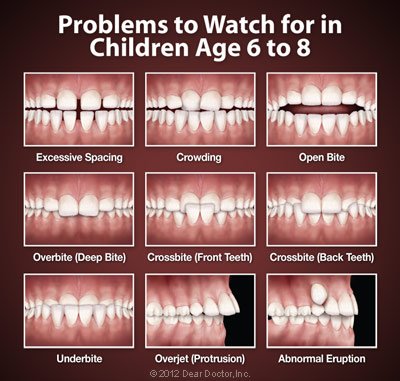 You undoubtedly already know that it’s never too late to start orthodontic treatment, but did you know that when it comes to your child’s teeth, sooner is better than later? Children should receive an initial orthodontic screening at the age of seven, according to the American Association of Orthodontists. What makes early diagnosis — and possibly early treatment — so critical?
You undoubtedly already know that it’s never too late to start orthodontic treatment, but did you know that when it comes to your child’s teeth, sooner is better than later? Children should receive an initial orthodontic screening at the age of seven, according to the American Association of Orthodontists. What makes early diagnosis — and possibly early treatment — so critical?
Children can benefit from an orthodontic evaluation at a young age in a variety of ways. However, it’s vital to understand that early evaluation does not always indicate early treatment; in most circumstances, if orthodontic treatment is required, your child’s growth patterns are simply monitored until treatment is ready to begin. This provides an opportunity to achieve the best results in the most effective manner while also helping in the prevention of future issues.
Although each child’s development is unique, most children’s first adult molars begin to emerge around the age of six. It is feasible to assess the basic alignment of the teeth from front to rear and side to side at this point. It may also be feasible to assess whether there is enough room in the mouth for all of the permanent teeth at this time — and, if not, what should be done.
When Earlier Treatment Is Better
Treatment for common orthodontic problems typically begins around age 9-14, when all of the baby teeth are gone and many of the permanent ones are in place. Some conditions, on the other hand, are considerably easier to treat if identified early on, when a child’s natural growth processes are in full swing.
Severe crossbite, for example, is a condition in which the upper teeth close in on the lower teeth. A palatal expander, which progressively and painlessly opens the upper jaw, can be used to cure this condition. It’s especially useful when the jaw hasn’t fully matured. If you wait too long, you might need a more sophisticated treatment — or perhaps oral surgery — to fix the condition.
Severe crowding is another condition that may benefit from early treatment. When the jaws are too tiny to contain all of the permanent teeth, this happens. To assist the adult teeth erupt (appear from beneath the gums) appropriately, palatal enlargement or tooth extraction may be indicated at this time. Even if braces are needed later, the procedure will most likely be less time consuming and complicated.
Early intervention can also help with a variety of other issues. Chipping and fractures are common with protruding teeth, especially in the front, and they can also affect a child’s self-esteem. Serious biting difficulties can develop from a severe underbite, which is characterized by the lower jaw becoming significantly larger than the upper jaw. Orthodontic tools, including as braces and headgear, can be used successfully to treat these issues at this point, while the child’s development is at its peak, reducing the likelihood of surgery.
Meet Your Award-Winning Dentists in Mission Viejo & Fullerton, CA

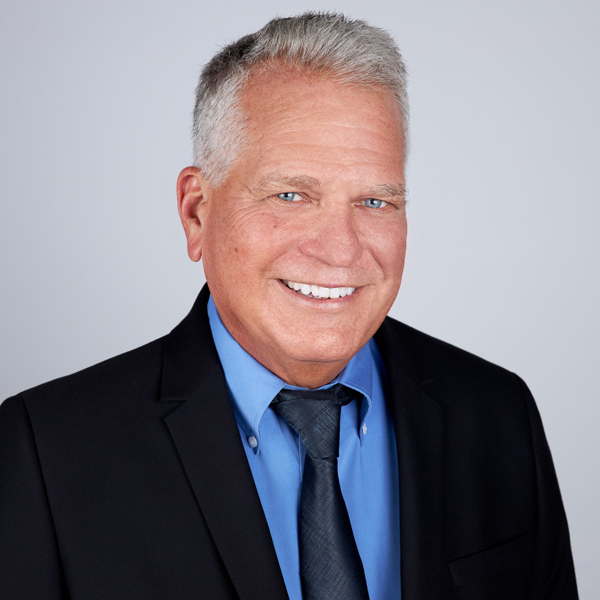
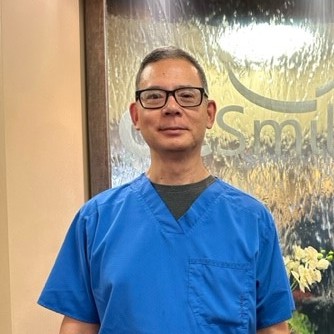
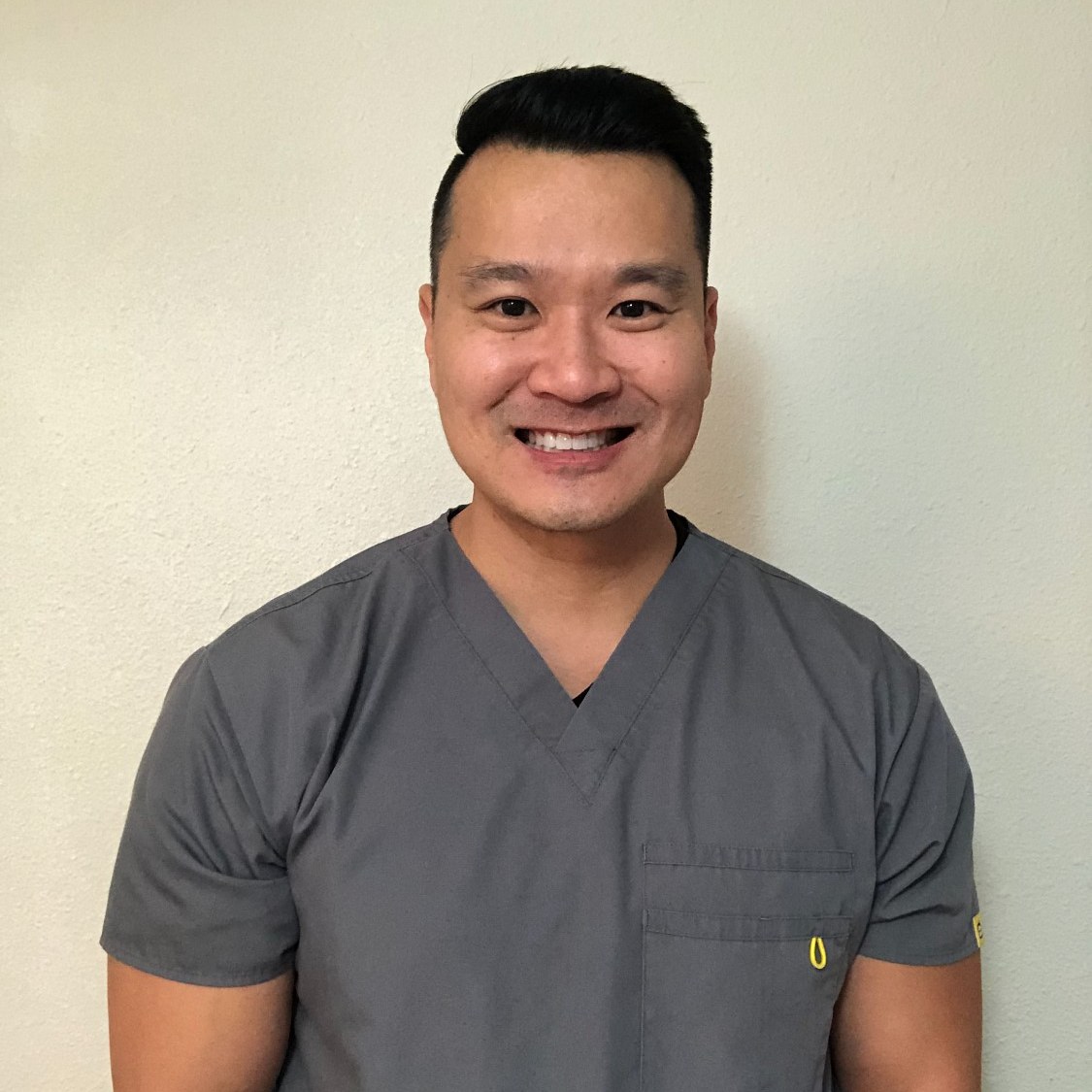
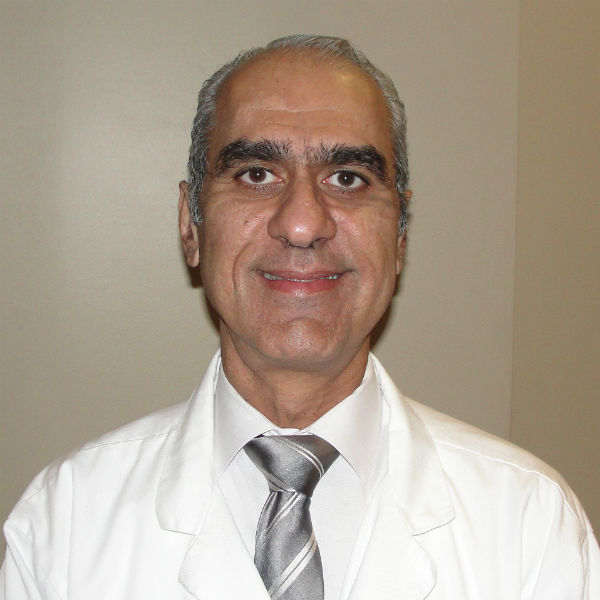




Our Dental Services
General Dentistry
Dental Implants
Emergency Care
Pediatric Dentistry
Oral Surgery
Orthodontics
The Proof is in our Patients

2 Convenient Locations
Our Fullerton, CA Office
1950 Sunny Crest Dr., Ste #1100
Fullerton, CA 92835
Working Hours
Our Mission Viejo, CA Office
24896 Chrisanta Drive, Suite #110
Mission Viejo, CA 92691
